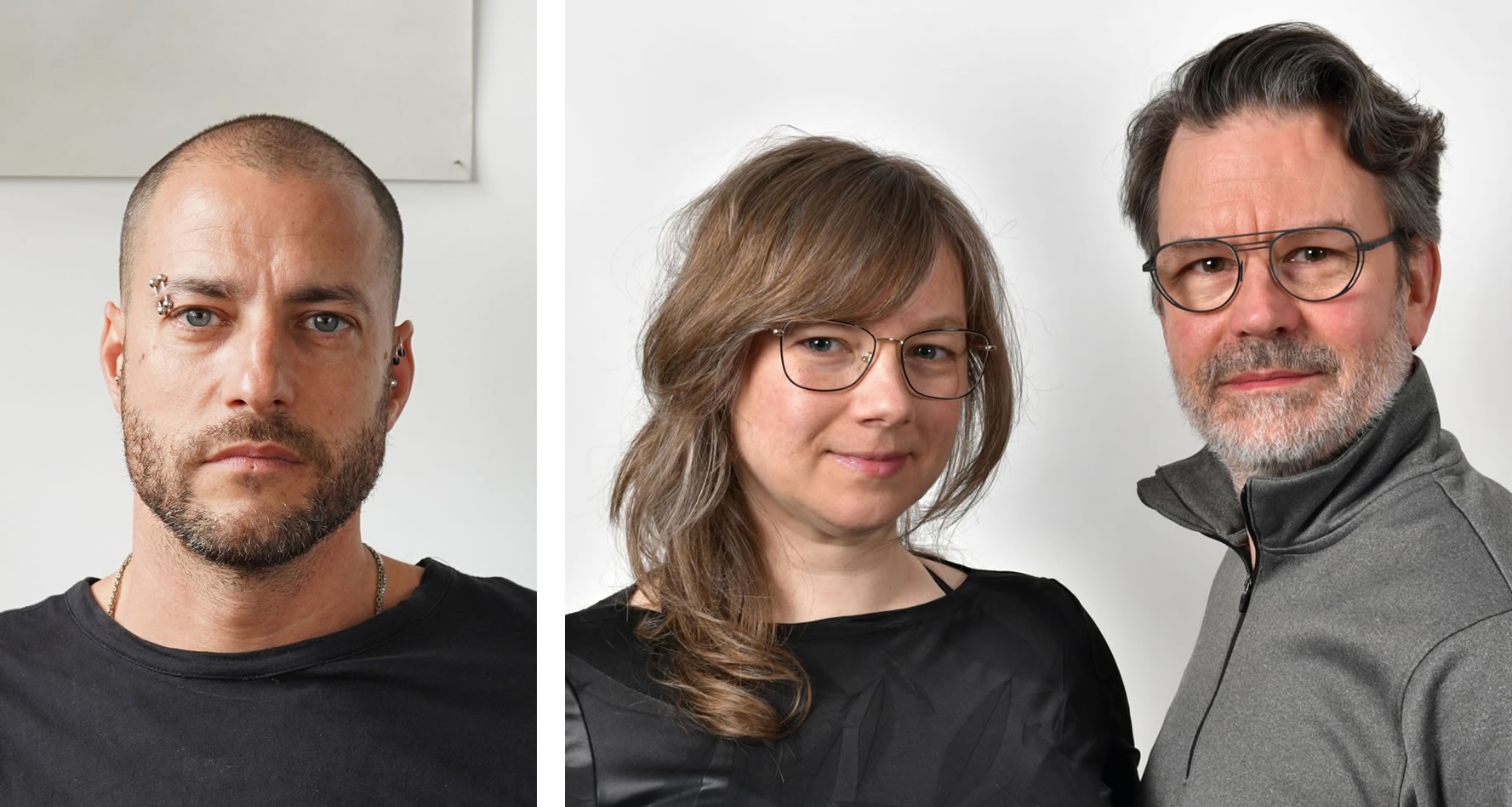Concordians Elisabeth Picard and Simon Laroche are among the laureates for the inaugural ÉTS artistic residency
 Simon Laroche by Emem Etti, Brodeur and Picard by Brodeur
Simon Laroche by Emem Etti, Brodeur and Picard by Brodeur
Two Concordians will soon be attending the inaugural École de technologie supérieure (ÉTS) Artistic Residency Program. Elisabeth Picard, MFA 11, is a graduate of the Department of Studio Arts in the Fibres and Material Practices concentration. Simon Laroche is a part-time studio arts/intermedia instructor.
The residency program, which combines technology, science and the arts, invited applications from artists across various disciplines. This initiative, part of the ÉTS Arts and Culture Integration Program, aims to facilitate collaborations between the artistic and research communities by providing artists with access to state-of-the-art facilities and technical expertise, as well as a stipend of $15,000.
The jury comprised renowned theatre director Robert Lepage, as well as Véronique Paradis, director of innovation and training at the Société des arts technologiques (SAT), among others. They evaluated 47 applications to determine the recipients for the 2024 edition.
‘I'm looking forward to be able to push my artistic research further’
During the residency, which runs from April to December 2024, Picard will collaborate with artist Ghislain Brodeur and ÉTS researchers and students. They will explore new technical possibilities and engage in interdisciplinary exchanges. The duo will be supported by Bora Ung, a ÉTS professor in the Department of Electrical Engineering, who specializes in fibre and optical sensor design used in communication, health and environmental fields. Ung holds the Research Chair in Multimaterial and Multifunctional Photonics Engineering.
"It is with great enthusiasm that we begin our participation in this first residency at ÉTS, collaborating with Bora Ung. We feel privileged to access such support, allowing us to further develop our expertise in visual arts and digital installations using optical fibre,” Picard says.
“This opportunity represents an important recognition of our passion for ingenuity and innovation, which drive our creative endeavours," Brodeur adds.
Laroche on his end will explore the boundaries between art, technology and performance, questioning the hybridization of artificial, biological and social systems. His critical and experimental work challenges the impact of technology on the construction of social and psychological realities. He will benefit from the support of ÉTS researcher David Labbé, whose expertise lies in software engineering, virtual reality, motion capture and sports biomechanics.
“I'm really looking forward to being able to push my artistic research further by collaborating with researchers operating in a cutting-edge field. I am happy to have the opportunity to devote a significant amount of time to a new creation project,” Laroche says.
Learn more about Concordia’s Department of Studio Arts and the artists participating in the ÉTS artistic residency.